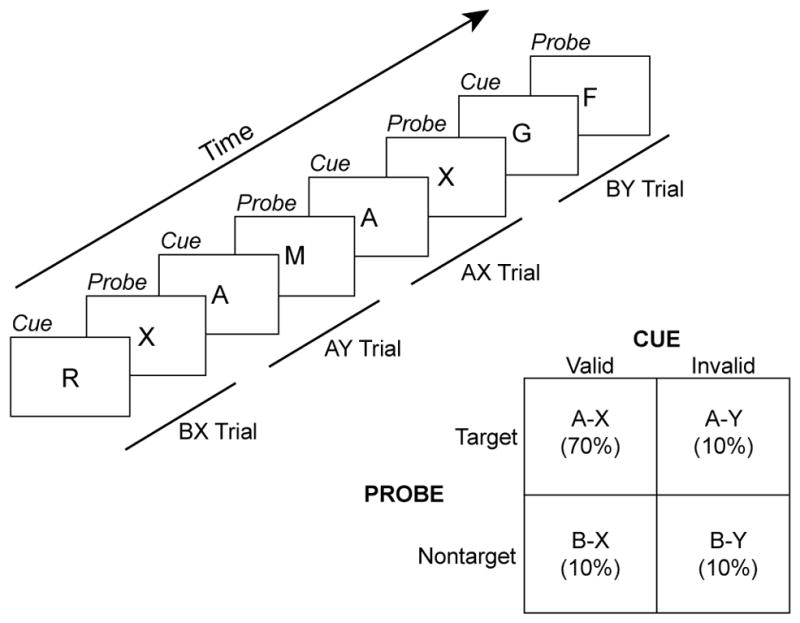Figure 1.

Schematic of classic version of AX-CPT paradigm. Single letters are visually displayed as a series of cue-probe pairs. Here, the target pair is the occurrence of an X probe followed immediately an A cue. Of the three nontarget trial types, BY trials (where B refers to any non-A cue and Y refers to any non-X probe) provide a low-demand baseline general performance index, while BX and AY serve as low-frequency lures that selectively index cognitive control (each lure type typically occurs with 10% frequency). A range of studies with this paradigm have found that optimal utilization of contextual cues can eliminate typical interference effects observed in BX trials, because in these trials the contextual cue allows for fully accurate preparation of a non-target response [74–76]. In contrast, enhanced proactive control increases interference on AY trials, since contextually based preparation of a target response is invalid in these trials.
